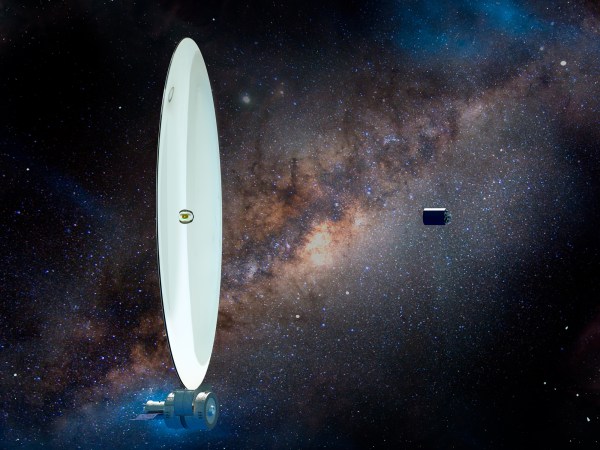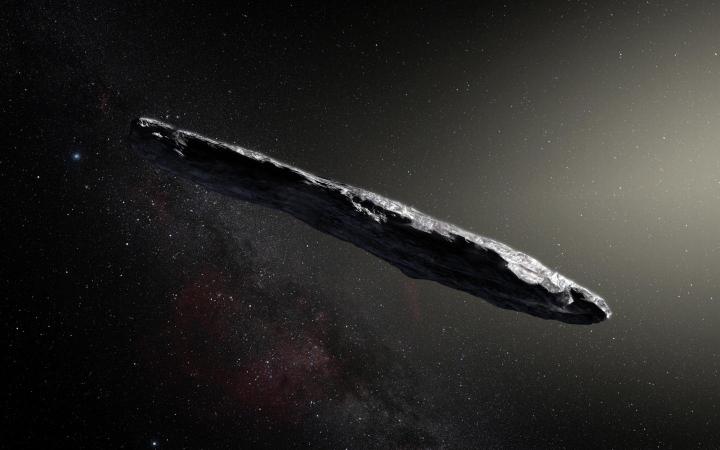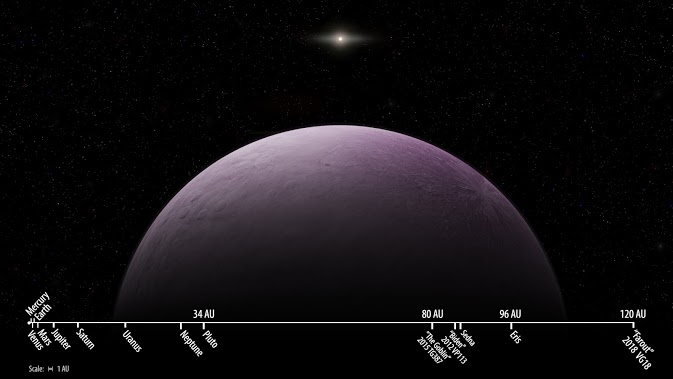

The last time Comet C/2022 E3 (ZTF) passed by Earth, our human cousins the Neanderthals still roamed the Earth.
Discovered in March 2022 by US-based astronomers, the comet, which sports an emerald green coma, is believed to have last passed through the inner solar system some 50,000 years ago. It made its closest pass by the sun on January 12 and will fly within a mere 27 million miles of Earth on February 1 on its way out of the solar system. This is why University of Maryland Astronomy graduate student Carrie Holt and US Naval Academy professor of astronomy Matthew Knight were in Flagstaff, Arizona, to observe the comet from Lowell Observatory last week.
“Because this comet travels fairly close to the Earth, we are presented with a great opportunity to study a more detailed view of the composition and structure of the coma, the cloud of gas and dust that surrounds the comet nucleus,” Holt says.
Comets consist of icy volatiles, such as water and carbon dioxide ice, around a nucleus of rocky material pulled from the protoplanetary disc that formed the planets billions of years ago. They can be difficult for astronomers to find until they get close enough to the sun for the volatiles to begin to sublimate, the process by which the off-gassing materials generate the comet’s coma and form its tail.
“They get really bright when they start evaporating water ice from their surface,” says Scott Sheppard, an astronomer at the Carnegie Institution for Science. He notes most comets don’t even get warm enough to begin off-gassing until they’re in Saturn’s orbit.
[Related: Scientists finally solved the mystery of why comets glow green]
The contents of a comet’s ice can also determine its appearance. The green hue of Comet C/2022 E3 (ZTF) is common among its kind, according to Holt, and is due to the presence of diatomic carbon, which “emits green light when it interacts with ultraviolet radiation from the sun,” she says.
While there was a time centuries ago when professionals and amateur comet hunters shared similar stargazing equipment, most comets today are discovered by professional digital sky surveys. Comet C/2022 E3 (ZTF) was discovered by the Zwicky Transient Facility in California, for instance, an observatory that scans the entire northern sky every two days looking for changes—such as the appearance of a suddenly brightening comet.
“The few comet discoveries outside of these surveys are usually found by amateur astronomers searching in regions of the sky where surveys don’t typically reach, like near the sun,” Holt explains. In 2020, amateur astronomer Michael Mattiazzo discovered C/2020 F8 (SWAN) by combing through data from the Solar and Heliospheric Observatory, or SOHO satellite, a joint project by NASA and the European Space Agency.
There are two main populations of comets in the solar system, according to Sheppard. There are the Jupiter family comets, which have short orbits of around 20 years or so and rarely travel much further out than the orbit of the gas giant. And then there are long period comets, a category that includes C/2022 E3 (ZTF).
“Their orbits take them beyond the orbit of Neptune,” Sheppard says. “They have these very elongated orbits” that can take thousands of years to traverse. Compared to short period comets, long period comets also travel much faster relative to Earth during their time in the inner solar system, reaching speeds of about 40 miles per second. Shorter period comets average closer to 10 miles per second.

When a phenomenon like C/2022 E3 (ZTF) is discovered, the coordinates are submitted to the Minor Planet Center, an international organization dedicated to tracking comets, asteroids, and other small bodies in the solar system. The center uses software to take the location of the new comet and project an orbit path and length, or period, for it, according to Knight. This can also allow scientists to project when a comet will past closest to the sun and to Earth.
“It takes a good bit of data to reliably determine just how long the period is,” he says. “The length of data needed varies by object, but usually weeks or months are needed before we have a confident handle on the period.”
Having observed Comet C/2022 E3 (ZTF) since last March, astronomers are fairly confident it is a long period comet with an orbit period of about 50,000 years. This means it likely originated in the Oort Cloud, a far-off shell of icy bodies enveloping our solar system at a distance 2,000 times greater than that of the sun from the Earth.
“The Oort Cloud has never been observed directly, but it is thought to be made up of many comets on circular orbits,” Holt says. “Gravitational interactions of passing stars or galactic tides can perturb these comets inward into an elliptical orbit.”
[Related: Our universe mastered the art of making galaxies while it was still young]
And it’s this origin at the periphery of our solar system that makes comets an interesting focus of research, Holt explains. “We study comets because they are the leftover building blocks of planet formation, spending most of their lifetime relatively unprocessed in the cold, outer solar system. When a comet enters the inner solar system and begins to outgas, we are able to gain insight into the conditions that existed during planet formation. We want to understand how our solar system came to be.”
Should you be lucky enough to catch sight of comet C/2022 E3 (ZTF)—look for a greenish glow in the northern sky after sunset with binoculars or a small telescope—keep in mind you’re witness the slow unsealing of time capsule from before the Earth was formed.































